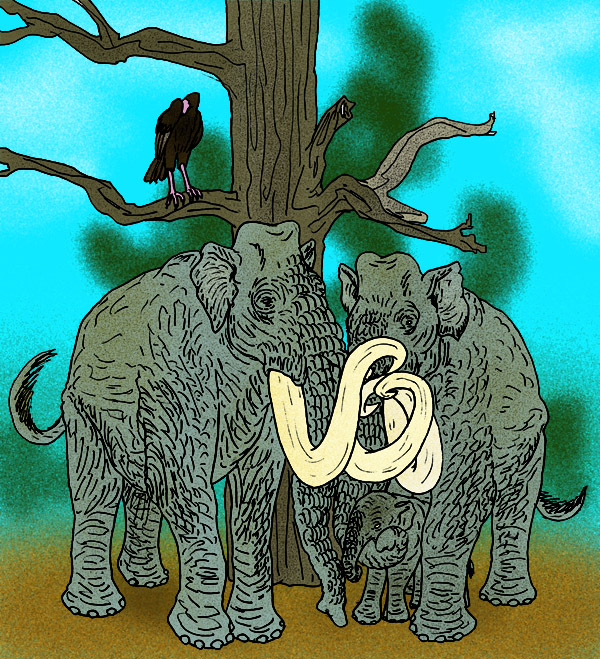- Mammuthus imperator
Taxobox
name = Imperial Mammoth

fossil_range =Pleistocene
regnum =Animal ia
phylum = Chordata
classis =Mammal ia
ordo =Proboscidea
familia =Elephantidae
genus = "Mammuthus "
species = "M. imperator"
binomial = "Mammuthus imperator"
binomial_authority = (Leidy, 1858)The Imperial Mammoth ("Mammuthus imperator") was the largest known species ofNorth America nmammoth , reaching a height of 4.9 m (16 ft)Fact|date=May 2008 at the shoulder. "M. imperator" ranged fromCanada toNew Mexico about 4.6 million - 17,000 years ago (LatePleistocene ). It was slightly larger than its more famous European cousins, theWoolly Mammoth , theSteppe mammoth and several others. Because it was much warmer in central and southwestern North America than in northernEurasia , the Imperial Mammoth is not presumed to have a thick fur coat like its European relatives. It lived alongside the Jefferson's Mammoth ("Mammuthus jeffersonii ") and the Columbian Mammoth ("Mammuthus columbi "). The latter is often confused with "M. imperator", because of its similar size and fossil range. The primary way to distinguish the two mammoths is that "M. imperator"' s tusks curve to the point of overlap, whereas "M. columbi"' s tusks do not. "M. imperator" was originally described as a fossil species of "Elephas " byJoseph Leidy in 1858. [cite journal|last=Leidy|first=J.|year=1858|title=Notices of remains of extinct vertebrata, from the Valley of the Niobrara River, collected during the Exploring Expedition of 1857, in Nebraska under the command of Lieut. G.K. Warren, U.S. Top. Eng. By F.V. Hayden, Geologist tothe Expedition.|journal= Proceedings of the Academy of Natural Sciences,Philadelphia|volume=10|pages=20–29]Excellent fossils of the Imperial Mammoth have been found in the
La Brea Tar Pits , in SouthernCalifornia . [cite journal|last=Guenther|first=E. W.|year=1987|title=Mammute und ihre Kümmerformen von Eurasien und Mexiko|journal=Quartärpaläontologie|volume=37/38|pages=13–51]References
Wikimedia Foundation. 2010.
